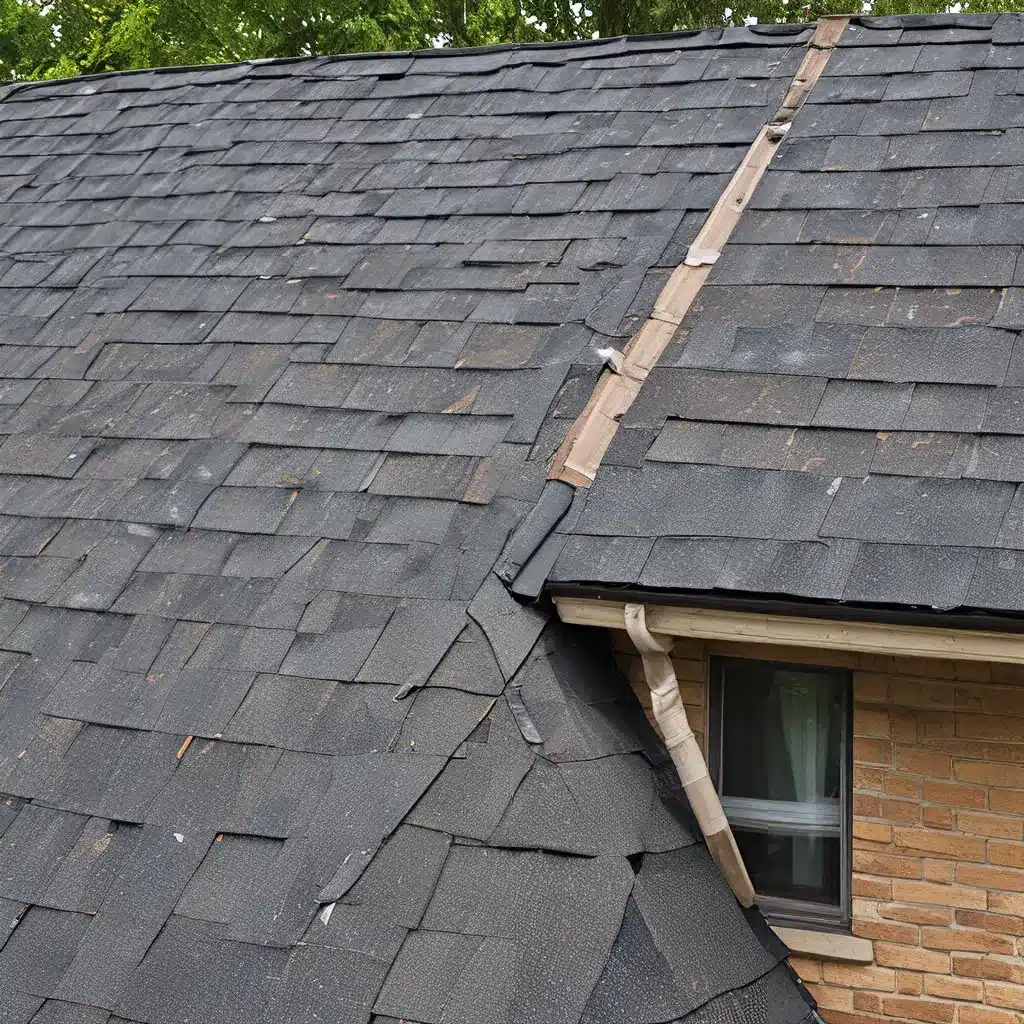
Ah, the joys of living in a climate with four distinct seasons – the vibrant fall foliage, the serene winter wonderland, the rejuvenating spring blooms, and the sultry summer days. But let’s be real, Mother Nature can be a real prankster when it comes to our roofs, throwing all sorts of curveballs our way.
Taming the Icy Grip of Winter
As I was admiring the snow-capped peaks during my recent ski trip to Aspen, Colorado, I couldn’t help but notice these interesting patterns on the roofs. Turns out, those were heat strips installed to melt snow and ice dams. Who knew? Well, not me, at least not until my friend Nate from Energy Smart Insulation enlightened me.
You see, the problem with ice dams is that they can wreak havoc on your roof, causing water to back up and seep into your home, leading to potentially costly damage. The culprit? Excessive heat loss from the house, causing the snow to melt above the conditioned space, only to refreeze at the eaves.
Now, the conventional solution to this problem is to address the root cause – the heat loss. By improving your home’s air sealing and insulation, you can prevent that melting and refreezing cycle. But as my friend Nate pointed out, “much of the time, the snow melts above the conditioned space because of excessive heat loss from the house.” And let’s be honest, not everyone is keen on tackling a major home renovation project.
The Heat Strip Conundrum
Enter the heat strips – a quick-fix solution that many homeowners opt for. They’re installed along the edge of the roof to melt the snow and ice, preventing those pesky dams from forming. Sounds like a simple and effective solution, right? Well, not entirely.
As Nate explained, “a 40-foot eave could use 560 Watts to electrically heat the outdoors” – that’s a lot of power consumption! And let’s not forget the ongoing monthly bills. Plus, there’s the risk of the thermal switch failing in the “on” position, leaving those heat strips running 24/7, even when they’re not needed.
Seeking a Balanced Approach
Now, I know what you’re thinking – “If air sealing and insulation don’t always fix the problem, what else can I do?” Well, my friends, it’s all about finding that delicate balance.
Yes, improving your home’s thermal envelope is crucial, but as Mother Nature’s Inc. points out, it’s not the only piece of the puzzle. Proper ventilation is just as important, ensuring that any residual heat loss or melting can be quickly whisked away before it has a chance to refreeze.
And let’s not forget the role that architecture plays in all of this. Those complex roof designs with higher and lower peaks can create shaded areas and sunny spots, leading to uneven snow melt and potential ice dam formation.
A Multifaceted Approach
So, what’s the solution? Well, it’s not a one-size-fits-all kind of deal. As the experts at Russell Roofing have found, a multifaceted approach is often the way to go.
They’ve been using commercial-grade heat cables embedded in aluminum panels, which they claim is more efficient than the standard zig-zag pattern. And they’ve also got a nifty little product called the VersaScreen IceBlaster – a heated gutter guard that tackles both gutter protection and ice dam/icicle prevention.
But hold on, there’s more! These experts also advise addressing the air sealing and insulation aspects, because even the most efficient homes can still leak a bit of air. And let’s not forget about that all-important ventilation – it’s the third leg of the stool, as they say.
Adapting to Your Unique Situation
Now, I know what you’re thinking – “But Allison, my home is unique! How do I know what’s going to work best for me?” Well, that’s where a little bit of customization comes into play.
You see, not every home is created equal. Some may have those lovely cathedral ceilings with minimal opportunities for ventilation or insulation. Others might be dealing with complex roof designs that funnel the melted water to a small gutter line, compounding the problem.
The key is to work with a roofing professional who can assess your specific situation and recommend the best course of action. They’ll consider factors like your home’s architecture, the local climate, and your budget to come up with a tailored solution that’ll have your roof weatherproofed and ready to take on whatever Mother Nature throws its way.
Embracing the Unexpected
Now, I know what you’re thinking – “But Allison, what if Mother Nature decides to pull a fast one on me and throws a 100-year event my way?” Well, my friends, the truth is, you can’t always outsmart Mother Nature. She’s a crafty one, and sometimes, she’s just going to do her thing, no matter how well-prepared we think we are.
But you know what they say – “When life gives you lemons, make lemonade!” In the case of a sudden, heavy snowfall, you might just have to embrace your inner Arctic explorer and break out the roof rake to clear those pesky icicles. Because hey, at least you’ll get to show off your winter wonderland skills to the neighbors!
And who knows, maybe you’ll even get to enjoy a cozy evening by the fireplace, sipping on a hot toddy and reminiscing about the time Mother Nature tried to outsmart you, only to find that you were one step ahead.
At the end of the day, weatherproofing your roof is all about balance, adaptability, and a little bit of good ol’ fashioned grit. So, don’t be afraid to get creative, embrace the unexpected, and partner with a roofing company that can help you navigate the ever-changing landscape of Mother Nature’s whims.